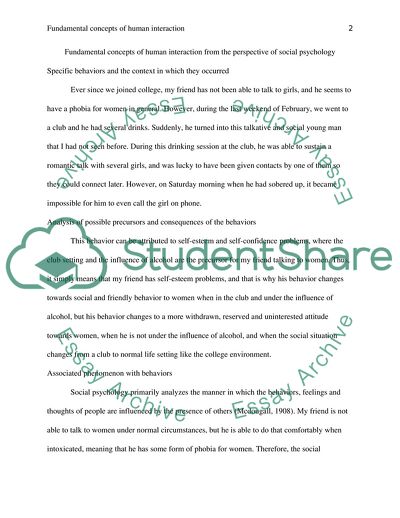Cite this document
(Fundamental Concepts of Human Interaction from the Perspective of Coursework Example | Topics and Well Written Essays - 1250 words, n.d.)
Fundamental Concepts of Human Interaction from the Perspective of Coursework Example | Topics and Well Written Essays - 1250 words. https://studentshare.org/psychology/1817912-fundament-concepts-of-human-interaction-from-the-perspective-of-social-psychology
Fundamental Concepts of Human Interaction from the Perspective of Coursework Example | Topics and Well Written Essays - 1250 words. https://studentshare.org/psychology/1817912-fundament-concepts-of-human-interaction-from-the-perspective-of-social-psychology
(Fundamental Concepts of Human Interaction from the Perspective of Coursework Example | Topics and Well Written Essays - 1250 Words)
Fundamental Concepts of Human Interaction from the Perspective of Coursework Example | Topics and Well Written Essays - 1250 Words. https://studentshare.org/psychology/1817912-fundament-concepts-of-human-interaction-from-the-perspective-of-social-psychology.
Fundamental Concepts of Human Interaction from the Perspective of Coursework Example | Topics and Well Written Essays - 1250 Words. https://studentshare.org/psychology/1817912-fundament-concepts-of-human-interaction-from-the-perspective-of-social-psychology.
“Fundamental Concepts of Human Interaction from the Perspective of Coursework Example | Topics and Well Written Essays - 1250 Words”. https://studentshare.org/psychology/1817912-fundament-concepts-of-human-interaction-from-the-perspective-of-social-psychology.


